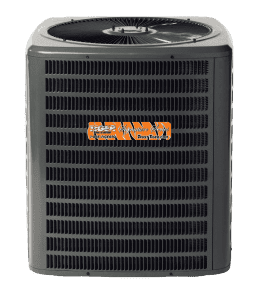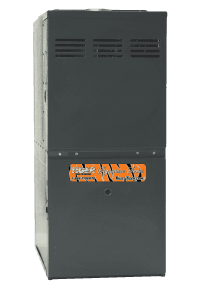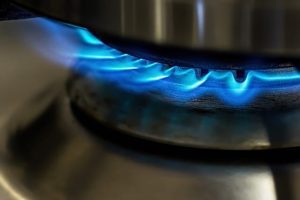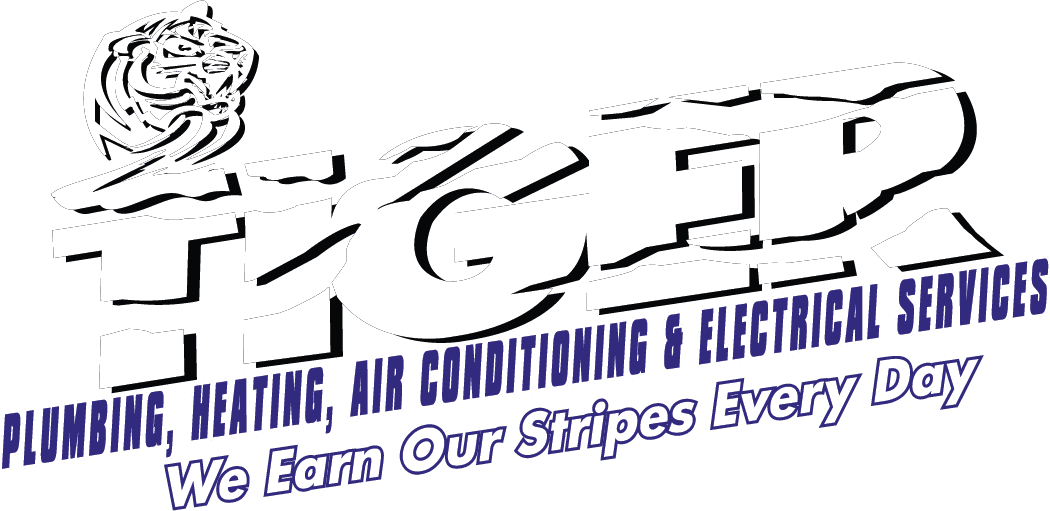Financing
Money Saving Energy Tips in Time for Energy Awareness Month
October is Energy Awareness Month, making it the perfect time to learn a few
amazing money saving energy tips for your home!
- When to Turn Off Your Personal Computer
- Yes, there is a small surge in energy when your computer first starts up, but this small amount of energy is considerably less than the energy used when your computer is running for long periods of time.
- For energy savings and convenience, consider turning off…

- The monitor if you aren’t going to use your PC for more than 20 minutes
- Both the CPU and monitor if you’re not going to use your PC for more than 2 hours.
- Make sure your monitors, printers and other accessories are on a power strip/surge protector.
- When this equipment is not in use for extended periods, turn off the switch on the power strip to prevent them from drawing power even when shut off.
- If you don’t use a power strip, unplug extra equipment when it’s not in use.
- Most PCs reach the end of their “useful” life due to advances in technology long before the effects of being switched on and off multiple times have a negative impact on their service life.
- The less time a PC is on, the longer it will “last.”
- PCs also produce heat, so turning them off reduces building cooling loads.
- Note: Screen savers are not energy savers.
- Using a screen saver may in fact use more energy than not using one.
2. Laundry Tips
- Wash your clothes in cold water using cold-water detergents whenever possible.
- Wash and dry full loads.
- Dry towels and heavier cottons in a separate load from lighter-weight clothes.
- Don’t over-dry your clothes.
- If your machine has a moisture sensor, use it.
- Clean the lint filter in the dryer after every load to improve air circulation.
- Use the cool-down cycle to allow the clothes to finish drying with the residual heat in the dryer.
- Periodically inspect your dryer vent to ensure it is not blocked.
- This will save energy and may prevent a fire.
- Consider air-drying clothes on clothes lines or drying racks.
3. Air Leaks and Your Wallet
- One of the quickest energy– and money-saving tasks you can do is caulk, seal and weather strip all seams, cracks and openings to the outside.
- Tips for Sealing Air Leaks
- Caulk and weatherstrip doors and windows that leak air.
- Caulk and seal air leaks where plumbing, ducting or electrical wiring comes through walls, floors, ceilings and officiants over cabinets.
- Install foam gaskets behind outlet and switch plates on walls.
- Look for dirty spots on your ceiling paint and carpet, which may indicate air leaks at interior wall/ceiling joints and wall/floor joists and caulk them.
- Cover single-pane windows with storm windows or replace them with more efficient double-pane low- emissivity windows.
- Use foam sealant on larger gaps around windows, baseboards, and other places where air may leak out.
- Cover your kitchen exhaust fan to stop air leaks when not in use.
- Keep the fireplace flue damper tightly closed when not in use.
- Seal air leaks around fireplace chimneys, furnaces and gas-fired water heater vents with fire-resistant materials such as sheet metal or sheetrock and furnace cement caulk.
- Set your th
 ermostat to 78° F or as high as comfort permits.
ermostat to 78° F or as high as comfort permits. - Close your blinds and curtains during the hottest part of the day.
- Close cooling vents in unused rooms and keep doors to unused rooms closed.
- Check, clean or replace air filters every month.
- Clean the outside condenser coil once a year.
- Insulate your house.
- Schedule periodic maintenance of cooling equipment by a licensed service representative.
- Attics must be ventilated to relieve heat buildup caused by the sun. If necessary, improve attic airflow by adding or enlarging vents.
5. Energy Saving Lightning Tips
- Indoor Lighting Tips
- By replacing your home’s five most frequently used light fixtures or bulbs with models that have earned the ENERGY STAR, you can save $75 each year.
- When replacing incandescent bulbs from recessed light fixtures, use energy-efficient bulbs that are rated for that purpose.
- Consider purchasing ENERGY STAR-qualified fixtures.
- They are available in many styles, distribute light more efficiently and evenly than standard fixtures, and some offer convenient features such as dimming.
- Controls such as timers and photocells save electricity by turning lights off when not in use.
- Dimmers save electricity when used to lower light levels.

- Keep your curtains or shades open to use day-lighting instead of turning on lights.
- Outdoor Lighting Tips
- Because outdoor lights are usually left on a long time, using CFLs or LEDs in these fixtures will save a lot of energy.
- CFLs and LEDs are available as flood lights.
- These models have been tested to withstand the rain and snow so they can be used in exposed fixtures.
- Set the thermostat on your water heater to 120°F to get comfortable hot water.
- Insulate your electric hot-water storage tank but be careful not to cover the thermostat.
- Insulate your natural gas or oil hot-water storage tank but be careful not to cover the water heater’s top, bottom, thermostat or burner compartment.
- Follow the manufacturer’s recommendations; when in doubt, get professional help.
- Insulate the first six feet of the hot and cold water pipes connected to the water heater.
- If you are in the market for a new dishwasher or clothes washer, consider buying an efficient, water-saving ENERGY STAR® model to reduce hot water use.
- Drain a quart of water from your water tank every three months to remove sediment that impedes heat transfer and lowers the efficiency of your heater.
7. Heating
- Set your thermost
 at as low as is comfortable in the winter.
at as low as is comfortable in the winter. - Clean or replace filters on furnaces once a month or as needed.
- Clean warm-air registers, baseboard heaters and radiators as needed; make sure they’re not blocked by furniture, carpeting, or drapes.
- Release trapped air from hot-water radiators once or twice a season; if in doubt about how to perform this task, call a professional.
- Place heat-resistant radiator reflectors between exterior walls and the radiators.
- During the heating season, keep the draperies and shades on your south-facing windows open during the day to allow the sunlight to enter your home and closed at night to reduce the chill you may feel from cold windows.
8. Ducts
- Check your ducts for air leaks.
- First, look for sections that should be joined but have separated and then look for obvious holes.
- If you use tape to seal your ducts, avoid cloth-backed, rubber adhesive duct tape, which tends to fail quickly.
- Remember that insulating ducts in the basement will make the basement colder.
- If your basement has been converted to a living area, hire a professional to install both supply and return registers in the basement rooms.
- Be sure a well-sealed vapor barrier exists on the outside of the insulation on cooling ducts to prevent moisture buildup.
- Long-Term Savings Tip: You can lose up to 60% of your heated air before it reaches the register if your ducts aren’t insulated and they travel through unheated spaces such as the attic or crawlspace.
- Get a qualified professional to help you insulate and repair ducts.
9. Kitchen Tips
- Refrigerator/Freezer Energy
- Don’t keep your refrigerator or freezer too cold. Recommended temperatures are 37° to 40°F for the fresh food compartment of the refrigerator and 5°F for the freezer section
- If you have a separate freezer for long-term storage, it should be kept at 0°F.
- Regularly defrost manual-defrost refrigerators and freezers; frost buildup decreases the energy efficiency of the unit.
- Don’t allow frost to build up more than one-quarter of an inch.
- Make sure your refrigerator door seals are airtight.
- Test them by closing the door over a piece of paper or a dollar bill so it is half in and half out of the refrigerator.
- If you can pull the paper or bill out easily, the latch may need adjustment, the seal may need replacing, or you might consider buying a new unit.
- Cover liquids and wrap foods stored in the refrigerator. Uncovered foods release moisture and make the compressor work harder.
- Don’t keep your refrigerator or freezer too cold. Recommended temperatures are 37° to 40°F for the fresh food compartment of the refrigerator and 5°F for the freezer section
- Other Energy-Saving Kitchen Tips
- Be sure to place the faucet lever on the kitchen sink in the cold position when using small amounts of water; placing the lever in the hot position uses energy to heat the water even though it may never reach the faucet.
- If you need to purchase a natural gas oven or range, look for one with an automatic, electric ignition system.
- An electric ignition saves natural gas because a pilot light is not burning continuously.
- In natural gas appliances, look for blue flames; yellow flames indicate the
 gas is burning inefficiently and an adjustment needs to be made.
gas is burning inefficiently and an adjustment needs to be made. - Keep range-top burners and reflectors clean; they will reflect the heat better, and you will save energy.
- Use a covered kettle or pan to boil water; it’s faster and it uses less energy.
- Match the size of the pan to the heating element.
- Use small electric pans or toaster ovens for small meals rather than your large stove or oven.
- A toaster oven uses a third to half as much energy as a full-sized oven.
- Use pressure cookers and microwave ovens whenever it is convenient to do so.
- Dishwasher
- Check the manual that came with your dishwasher for the manufacturer’s recommendations on water temperature; many have internal heating elements that allow you to set the water heater in your home to a lower temperature (120°F).
- Scrape, don’t rinse, off large food pieces and bones.
- Soaking or pre-washing is generally only recommended in cases of burned-on or dried-on food.
- Be sure your dishwasher is full, but not overloaded, when you run it.
- Don’t use the “rinse hold” on your machine for just a few soiled dishes. It uses 3 to 7 gallons of hot water each time you use it.
- Let your dishes air dry; if you don’t have an automatic air-dry switch, turn off the control knob after the final rinse and prop the door open a little so the dishes will dry faster.
To have all of your plumbing, heating, cooling or electrical systems energy efficiency checked call 1-888-9TIGER4 or visit TrustTiger.com today!
Be sure to check out Tiger Plumbing, Heating, Air Conditioning and Electrical Services on Facebook, Twitter, Pinterest, and Instagram for more valuable money saving information!

Financing
Options
See how fast we can get to you!
Join A
Winning Team
Winning Team





















